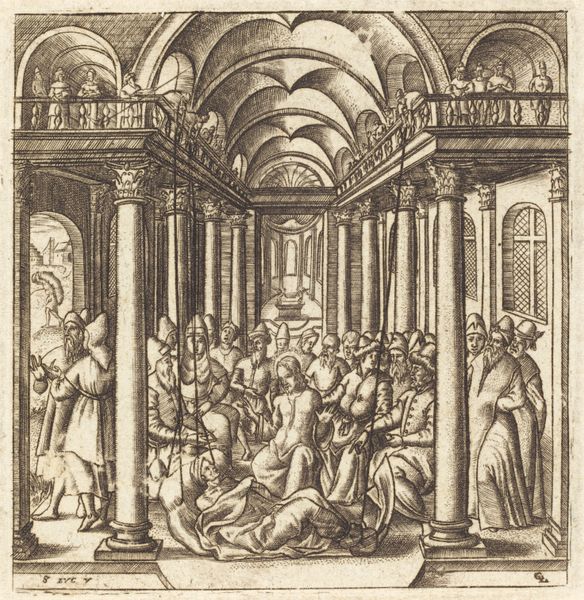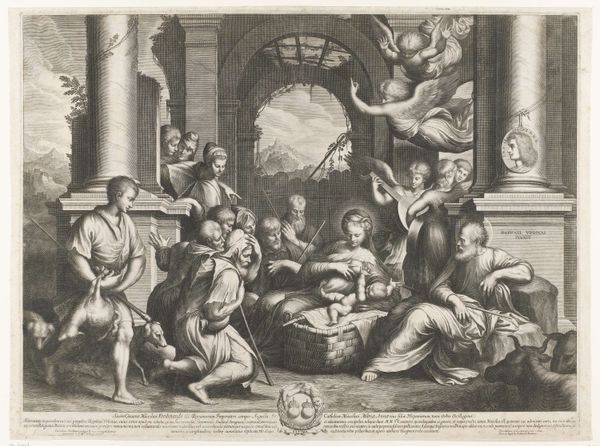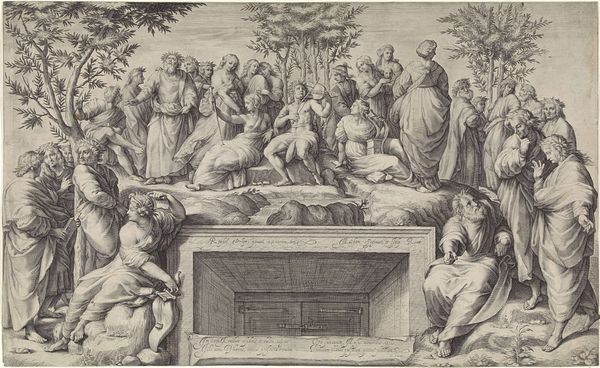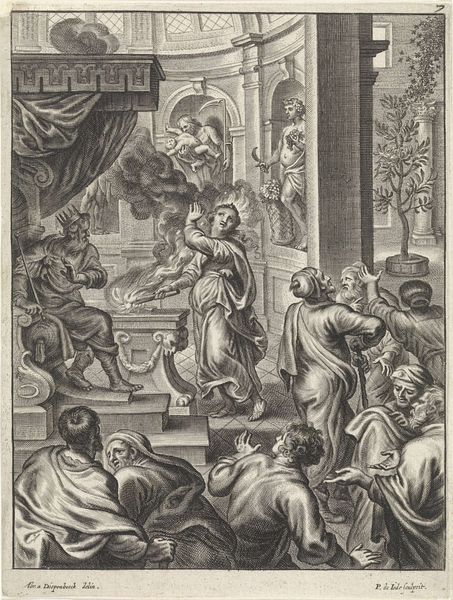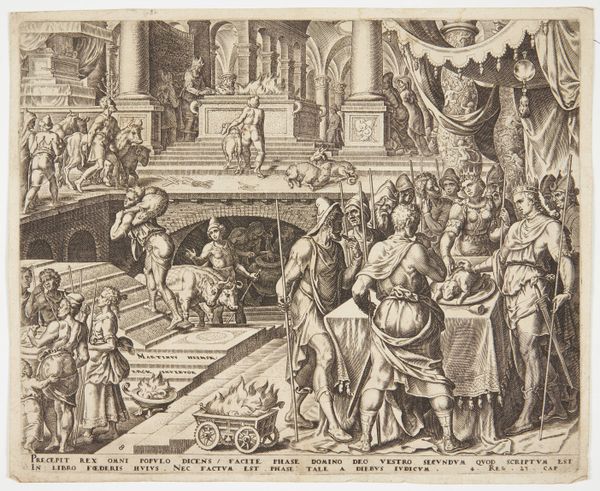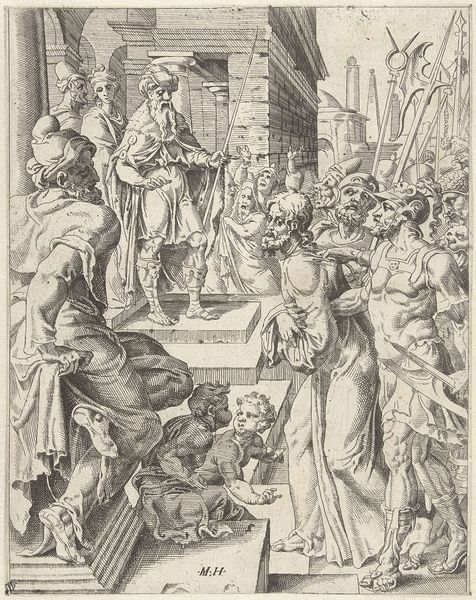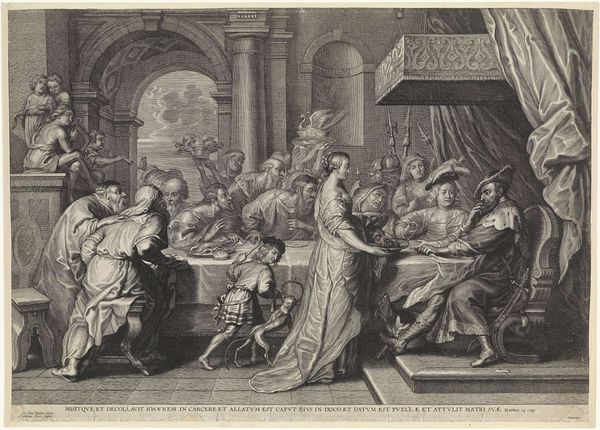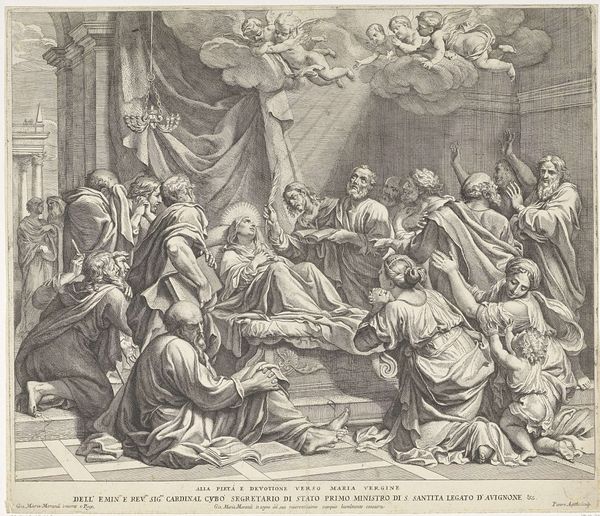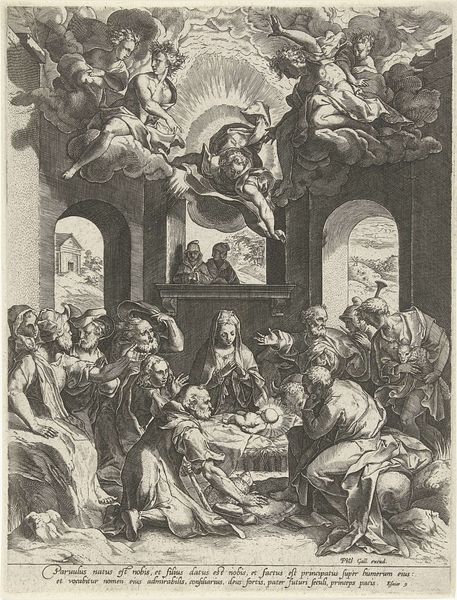
print, engraving
#
baroque
# print
#
figuration
#
line
#
genre-painting
#
history-painting
#
engraving
#
realism
Dimensions: height 297 mm, width 404 mm
Copyright: Rijks Museum: Open Domain
Curator: Here we have Jacob Matham's engraving, "The Last Supper," created in 1617. Editor: My initial reaction is one of controlled chaos. The sheer density of figures, all rendered with such meticulous detail, creates a sense of overflowing energy despite the traditional subject matter. Curator: Precisely. Note how Matham uses line—varied in thickness and density—to define form and space. Observe the masterful creation of depth through the archway that frames the supper, contrasted with the busy foreground action. The baroque sensibilities are striking. Editor: I'm drawn to how the artwork, while seemingly a classical rendering of the Biblical scene, hints at socio-economic dynamics through depictions of labor. We are shown not just the disciples, but the servants, the workers—who seem less idealized, perhaps a reflection of their marginalized status? Curator: A compelling interpretation. Considering that Matham was a prominent printmaker, the print’s reproducibility allowed the message of this scene, with all its hierarchical elements, to spread among different audiences. We can analyze how the formal structures were complicit in disseminating religious doctrine during this period. Editor: Right. And let's also consider the historical backdrop. This work emerged during the Counter-Reformation. Art was used to reaffirm Catholic doctrine in the face of the Protestant Reformation. The opulence and the central positioning of Jesus emphasize the sanctity and dogma that were under attack. Who gets depicted in the light becomes political. Curator: Yes, the print's value then is closely intertwined with the political function of imagery, a relationship intrinsic to its artistic composition. It speaks volumes about Baroque strategies, art as rhetoric. Editor: Ultimately, grappling with how it situates religious power through these details adds vital nuance to its reading. Curator: A comprehensive engagement that adds layers to appreciating Matham's printmaking skill and its place within a contested European religious landscape.
Comments
No comments
Be the first to comment and join the conversation on the ultimate creative platform.
